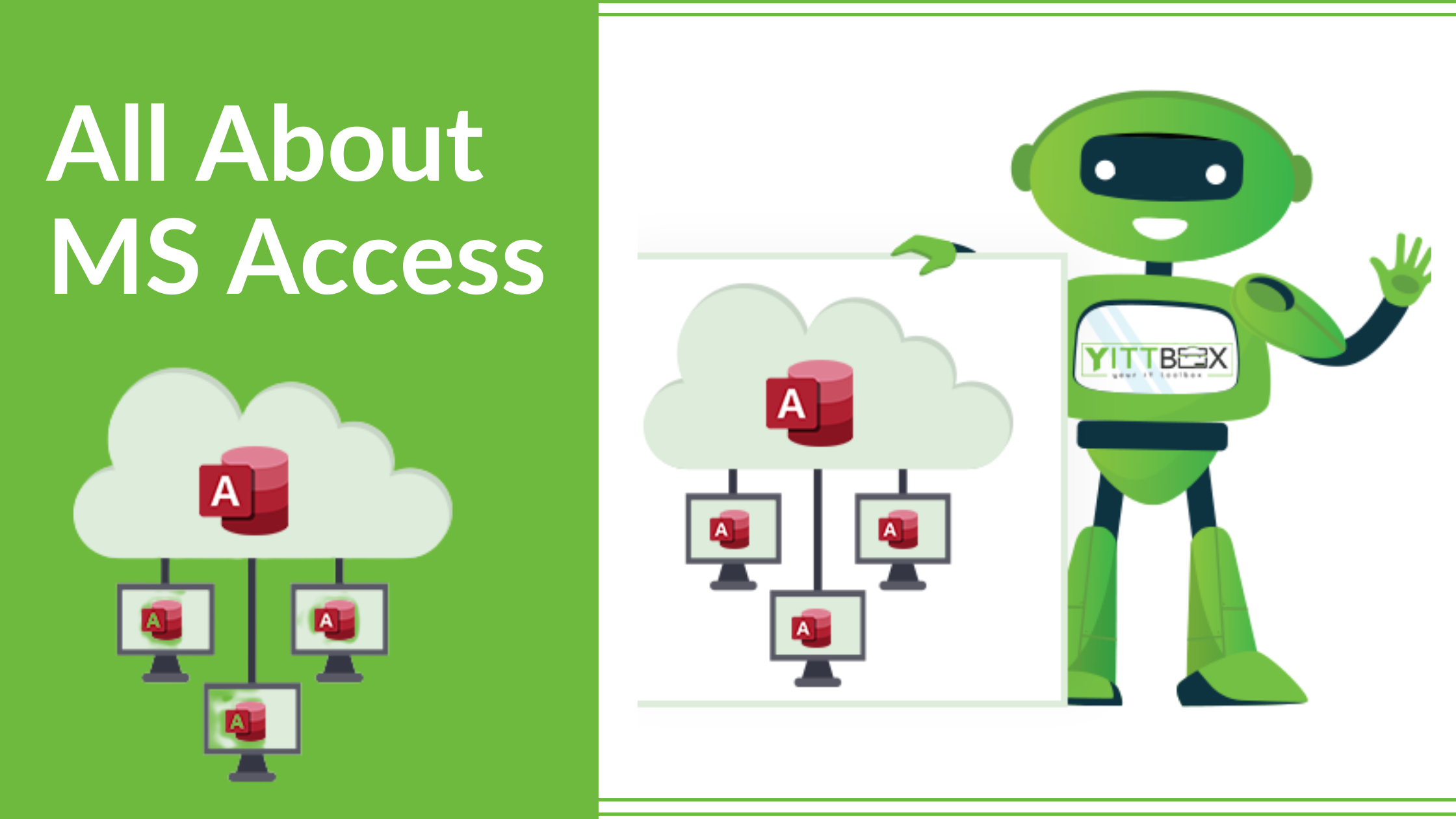All About Microsoft Access
This blog is all about Microsoft Access. Microsoft Access has been around for a long time, and yet some people are still skeptical about how it really makes a world of difference for their business. It’s a part of the Microsoft Office Suite and is a revolutionary database management system and a potent business productivity tool that enhances the efficient storage and use of data for myriad purposes.
It combines the relational Microsoft Jet Database Engine with a graphical user interface and software development tools to organize data for easy retrieval and for serving diverse requirements. The prime uses of MS Access are:
- To manage accounts and bills
- To store huge volumes of data in tables and allow customization of data as per the requirements
- To compare data and find a relationship between existing data quickly and efficiently
- To draw conclusions and generate reports without duplication of data
Microsoft Access lets you store data in two types of databases. The flat-file database is used to store data in the form of plain text without using any tables. A relational database is used to store data related to one another by supporting multiple tables that help organize the data in rows and columns.
Components of Microsoft Access
MS Access is used by large organizations and several businesses for accounting purposes and to compare important data to generate reports for analyzing current and future business needs. A database in MS Access allows for easy and secured storage of data to access easily by different users via multiple components. These key components of MS Access are:
Tables: You can store your data in tables with several rows and columns by entering the correct information, and it can look similar to Excel. A single database that comprises of data for the entire project is a flat database. Creating multiple tables with many rows and columns, and interrelating the tables to each other is a relational database.
Forms: Data forms let users enter important information into the database without using a spreadsheet like Excel. This gives very minimum chance to commit a data entry error and avoid other common human errors.
Queries: A database often includes numerous entries and information, and a user may need a specific information at a given point in time. Queries help find important information in the database, and this query can be sorting, filtering, calculating, updating, and other actions.
Relationships: When you add multiple tables, you create a connection between them to draw specific conclusions and generate reports for multiple purposes. This connection between the tables can be one to one, one too many, or many to many depending on the requirement.
Macros: These are predefined actions that let you automate tasks while creating Access reports, and multiple tasks can function whenever the macros option is selected.
Reports: All the information entered into the database can be reviewed and analyzed using reports. A report wizard will help you sort, group, and label data easily to customize and modify as per the requirements.
Module: It’s a set of pre-defined instructions created in a database for use throughout the database.
All About Microsoft Access Vs All About Microsoft Excel
While MS Access and MS Excel help store data and look similar, they’re significantly different from each other.
MS Excel is a spreadsheet application that’s useful for individual projects and to perform several common and brief calculations. A few hundred data cells are used to draw conclusions and to create charts from the acquired results.
MS Access is exclusively used to store and manage huge volumes of data and information that is retrieved easily whenever needed. While Excel requires users to type information manually, Access allows creating pre-made forms and queries to access and share data across different platforms. Access lets you connect with other applications to automatically port data to Access.
In other words, with MS Access, users can use other MS applications and other software, including SQL Server and Oracle to import and export data seamlessly. You can create tables, queries, forms, and reports within the program and make changes to them and direct the application to use the latest and updated data that becomes available to all users. Multiple users, including those from other sources like the desktop and the web, can access the data stored on MS Access.
The Takeaway all about Microsoft Access
With so much going for Microsoft Access, it’s time for businesses to invest in this state-of-the-art database management program that is tailored for your diverse needs and empowers your company with a competitive edge to experience faster growth and development.








